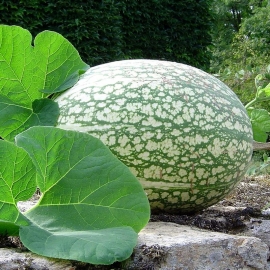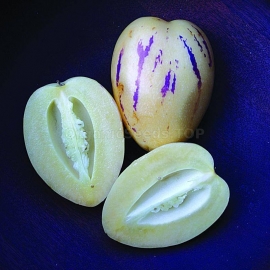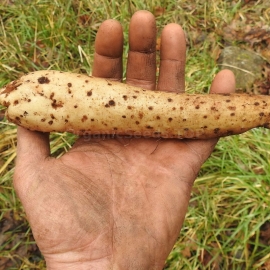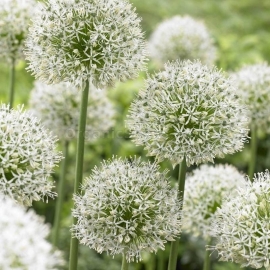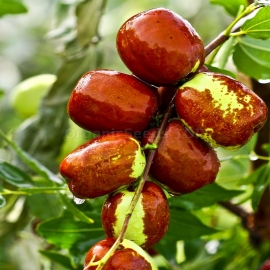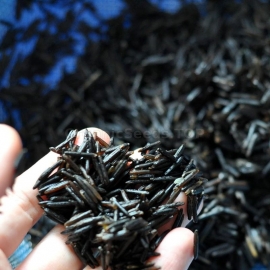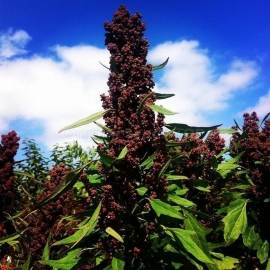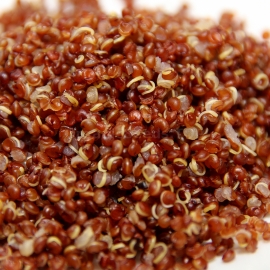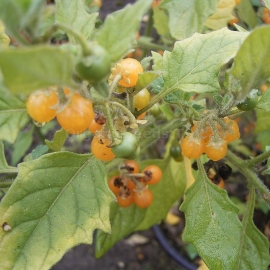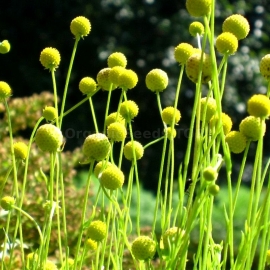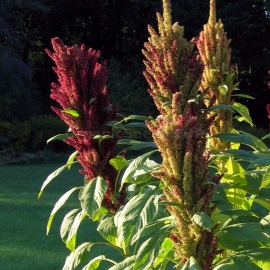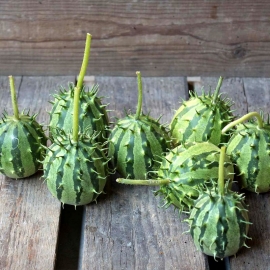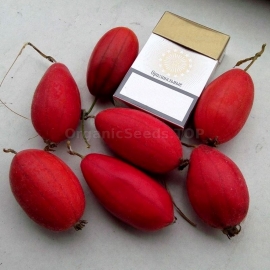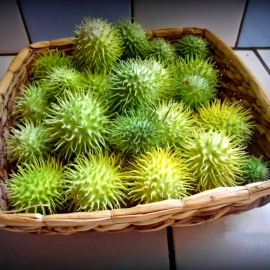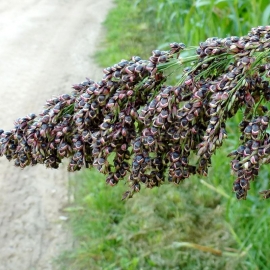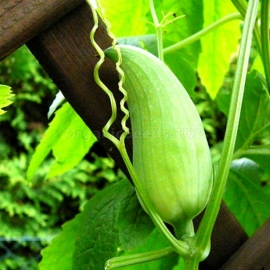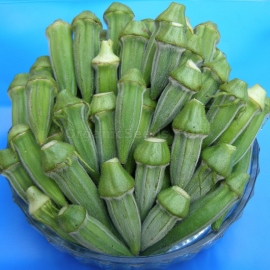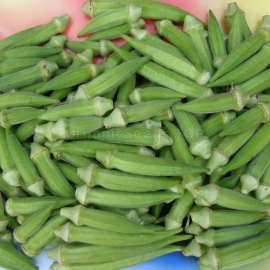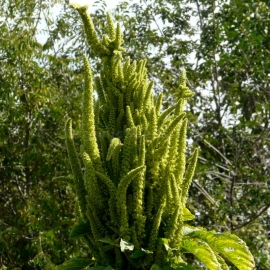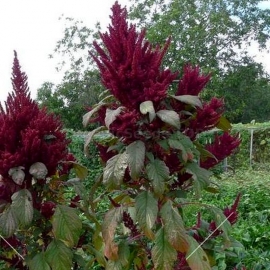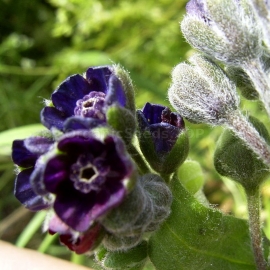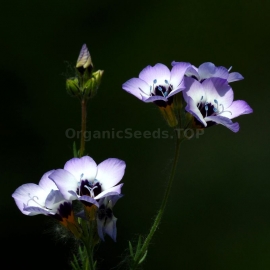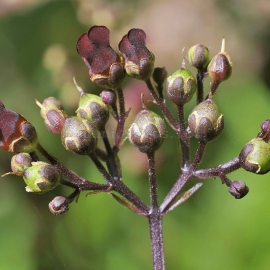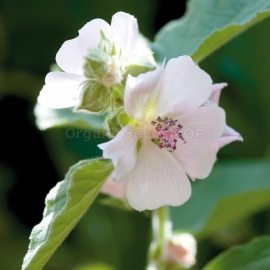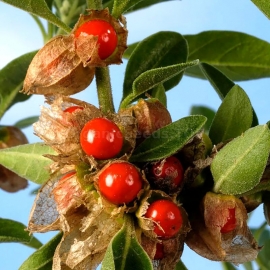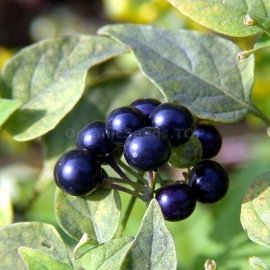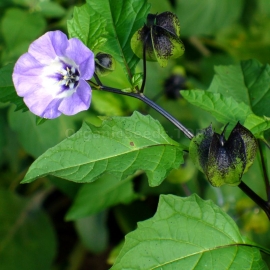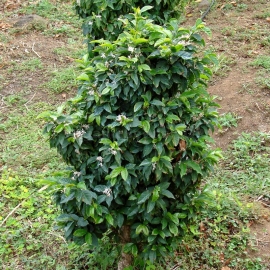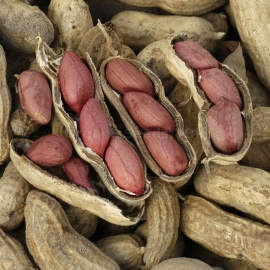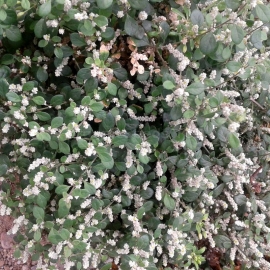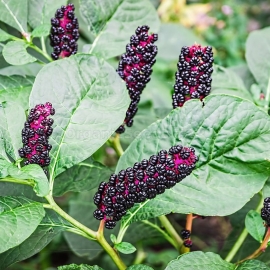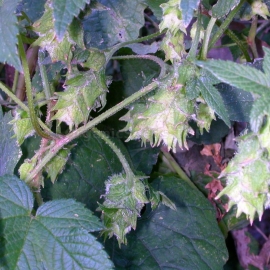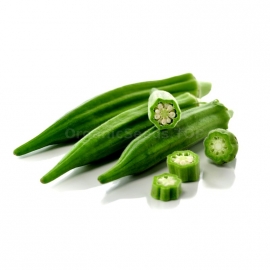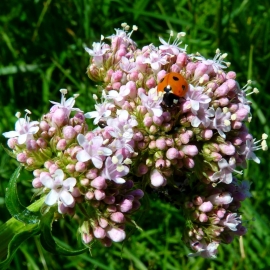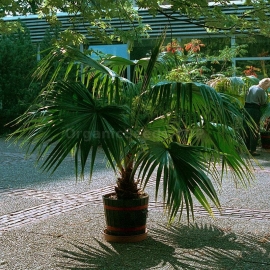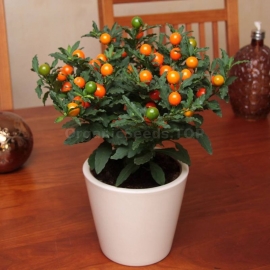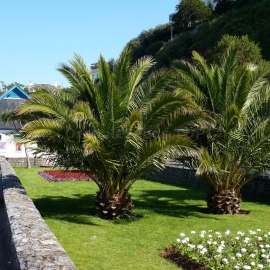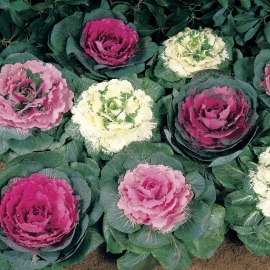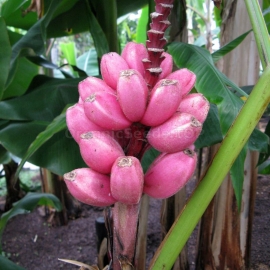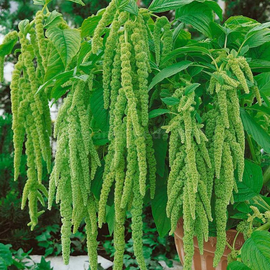Product code: 12375
2.00 €
A member of the Curcurbitaceae family, Cucurbita ficifolia produces large basketball sized fruits around 5kg in weight. We’ve had one drop off and fall straight through a plastic chair so be aware of their weight!
Product code: 12312
3.50 €
The gorgeous round fruits of the Melon pear are cream skinned with purple streaks and have deliciously sweet and juicy flesh which is a succulent mixture of honeydew melon and cucumber. It is grown in a manner similar to its relatives such as the tomato.
Product code: 12281
4.97 €
Chinese mountain yam is one of the few tubers grown commercially in China and used extensively as a source of starch. Until recently this species was used only as an ornamental in the U.S, for the sweet smelling cinnamon like blossoms.
Product code: 12279
1.14 €
This is a superb cultivar, actually a hybrid between A.stipitatum and A.aflatunense. Giving vigorous plants, it produces in late spring long-lasting, six inch spheres of snowballs, each containing hundreds of pure white flowers.
Product code: 12125
3.00 €
The Chinese red date was domesticated in South Asia by 9000 BC, and over 400 cultivars now exist. The exact natural distribution of the plant is not known, but is believed to be southern Asia, between Lebanon, Iran, Pakistan, India, Bangladesh, Nepal.
0.97 €
1.39 € (Sale: 30%)
Historically, this native wetland plant had great importance to various Native American tribes who highly revered it as a part of their culture; it also provides a crucial food source for ducks and other wildfowl. In recent times, this "caviar of grains"
Product code: 12088
1.14 €
It is characterized by a high content of vegetable protein, which is completely absorbed by the body and is similar to milk, is rich in protein necessary for the proper formation of the body, as well as riboflavin, thiamine, folic acid, vitamins A and E.
Product code: 12087
1.14 €
A hardy, high yielding variety with vivid pinkish-red seed heads. Selected to withstand some moisture when mature (less occurance of sprouting in the head). Variety originated in South America. Yields a high protein seed "grain".
Product code: 11964
1.14 €
This fast-growing, newly discovered plant from the Solanaceae family produces clusters of sweet, yellow or orange berries, (which bear a striking resemblance to yellow currants but are no relation), on long dividing stems.
Product code: 11965
1.14 €
Attractive, bright yellow pompon flowers are complemented by pale green foliage. This novel plant releases a sweet apple fragrance when brushed against and is ideal for front of the border or containers to enjoy the heavenly scent close by.
Product code: 11809
1.78 €
The plant is up to 2 meters high, very high-yielding (300-500 grams of seeds per plant), the grain is small, white, from which delicious various dishes are prepared.
Product code: 11660
3.00 €
This horned cucumber plant is a annual vine, 1.5 to 3m long of African origin. The stem is angular, ridged and hairy; internodes are 5-8cm long. At each node, a 2.5 to 5cm long curling tendril forms, along with two to four pale yellow male flowers.
Product code: 11565
1.39 €
Goldencreeper or Manchu Tuber-Gourd makes subterranean, very large, perennial, potato-like root tubers and annual, fast growing vines with hairy leaves and yellow flowers which are followed by egg-sized hairy fruits (not edible).
Product code: 11552
3.00 €
Cucumis anguria, commonly known as bur cucumber, bur gherkin, cackrey, gooseberry gourd, maroon cucumber, West Indian gherkin, and West Indian gourd, is a vine that is indigenous to Africa.
Product code: 11525
1.14 €
The plants grow eight to twelve feet in height at maturity developing beautiful, rich, shiny, black-coated seeds. The seed heads are compact with most being eight to twelve inches in length. As its name suggests, the seeds are actually amber colored.
Product code: 11495
3.00 €
Cyclanthera pedata, locally known by its Quechua names kaywa (pronounced kai-wa, hispanicized spellings caigua, caihua, caygua, cayua) or achuqcha (also spelled achocha, achogcha, achojcha, achokcha, archucha) It is a herbaceous vine.
Product code: 11361
1.87 €
A mid-ripening, undersized variety, with a stem height of 65-80 cm, a diameter of 1.5-1.9 cm, a plant diameter of 50-60 cm, an average weight of an ovary 9 g, a fruiting period 28-34 days, the number of collections -7- 9, approximately every 3-4 days, unt
Product code: 11360
1.14 €
Mid-season, medium-sized variety - stem height 115 - 120 cm, diameter - 2 - 2.5 cm, plant diameter 50 - 60 cm, small branches - 6.7-7.8 cm in diameter, yellow color, spot at the base of the wreath is raspberry ...
Product code: 11322
1.14 €
Traditional grain type from southern Mexico. (“Mercado” means market in Spanish.) Apple-green seed heads give way to delicious, tan grain. This lodge-resistant variety is rather long-season for an amaranth, requiring 125 days to yield mature seed.
Product code: 11321
1.14 €
Red-flowering amaranth from Guatemala, where amaranth has been a staple crop for many centuries. This grain type amaranth has recently been revived in the Mayan communities of Baja Verapaz after almost being lost during the civil war.
Product code: 10506
1.14 €
Houndstongue is a distinctive, greyish and downy biennial with broad lanceolate leaves and clusters of maroon red flowers. In bloom from May to August. Houndstongue is a biennial of dry, base rich soils on ground that is subject to regular disturbance.
Product code: 10490
1.39 €
This perennial flower can be grown from Polemonium seeds and has the common name of Jacob's Ladder. The name was inspired by the leaves on the plant which are in successive pairs opposite each other resembling a ladder.
Product code: 10483
1.14 €
Called "Queen of the Herbs" in Ireland, where its tendency to grow under elder trees imbued it with elder’s magical reputation. In England it became a common treatment for "king’s evil," or scrofula (tuberculosis of the lymphatic glands).
Product code: 10430
1.14 €
Every herb garden needs to have this versatile perennial! It is highly regarded as a beneficial medicinal herb and has been widely used for the last 2000 years in both foods and in medicines. It is native to Europe.
Product code: 10249
3.00 €
With origins on the Indian subcontinent (India, Pakistan, Sri Lanka, and Bangladesh) Ashwagandha has a variety of herbal uses. Used primarily as an immune booster, Ashwagandha is considered to be a rasayana herb, a term that means rejuvenation.
Product code: 10246
1.14 €
Wonderberry or Sunberry are fast-growing, compact plants, developed by Luther Burbank and introduced in 1909. Great controversy arose over the origins of this plant. Many people claimed that Burbank had only reintroduced Solanum nigrum.
1.14 €
A vigorous plant with handsome, wavy-toothed leaves and attractive pale blue, bell-shaped flowers followed by ornamental papery Chinese lanterns. Branches of these can be dried and used for winter decoration indoors.
Product code: 9879
2.00 €
As one of the world’s most popular commodities, it is grown commercially throughout South America. Commercial growth focuses on quick production and larger beans and so plants are placed in full sun and watered extensively.
Product code: 9761
2.00 €
Start Peanut seeds and enjoy your own harvest of delicious Peanuts! Peanut Plant seeds can be planted directly outdoors for areas with long growing seasons as they need 5 months of warm weather.
Product code: 8660
1.50 €
3.00 € (Sale: 50%)
Are you interested in knowing about the herb Aerva Lanata then you are at the right place? Since ages, plants or herbs are being used as medicines for natural health care. Extracts from plants are being used for various medicinal purposes and treatments.
Product code: 8605
1.14 €
Herbaceous perennial with thick, reddish stems, large, drooping leaves and plump purple berries. Native to the US, especially the southern states. A handsome weed much appreciated by birds, as the berries occur in large pendant clusters, very fruity.
Product code: 8072
3.00 €
The japanese hop with the scientific name Humulus japonicus belongs to the family of hemp (Cannabaceae). Its origin leads to China, Japan and Korea aswell as the tropical Asia with Vietnam. During the late 1500s it was imported to the USA as neophyte.
Product code: 6754
1.14 €
Okra, also known as gumbo, is a warm-weather vegetable that thrives in the long, hot summers of the southern United States. Although okra loves hot weather, it can successfully be grown in cooler Northern climates as well.
Product code: 1172
1.14 €
Herbaceous perennial native to Europe and temperate Asia. Traditional usage (TWM): sedative. This is the standard European wild form of the plant. Valerian prefers full sun to part shade and moist but well-drained soils.
Product code: 1233
4.97 €
A much-loved fan palm that has been popular since Victorian times and makes a superb potted palm for the home or terrace. In warmer climates and over a period of years, it grows into a handsome, medium-sized tree with a slender trunk.
Product code: 1297
1.14 €
It is commonly known as the Jerusalem Cherry, Madeira Winter Cherry, or simply Winter Cherry. These perennials can be grown decoratively as house plants or outdoors as an ornamental plant. Jerusalem Cherry will grow as a perennial outdoors down to Zone 8.
Product code: 1578
3.00 €
One of the most popular landscape palms, the stout form of the Canary Island Date Palm is a familiar sight in most warm temperate and subtropical countries of the world.
Product code: 1467
1.14 €
Start Ornamental Cabbage seeds to create a colorful bed that is cold tolerant and easy-to-maintain. Ornamental Cabbage uses include edging the flower border or planting in containers for fall and winter interest.
Product code: 1889
3.00 €
Musa velutina is a very slender species from North East India, very fast growing. This ornamental banana grows to about 6 feet tall. The plant will stay smaller if grown as a container specimen for cooler climates.
Product code: 2137
1.14 €
An annual plant, the stems are erect, powerful, 100-120 cm high, with long hanging paniculate inflorescences of pale green color, grown by sowing seeds in April for seedlings, or in May in open ground.

